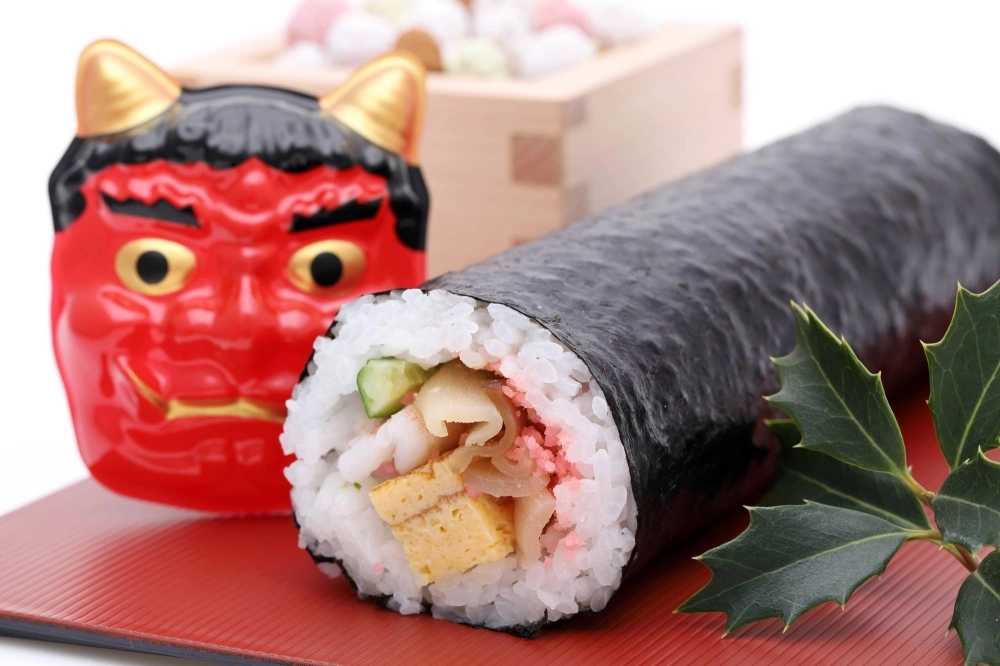Feb. 3 is Setsubun, which means the end of winter (yay!), the chance to pelt people with roasted soybeans (yay!) and the silent consumption of a thickly stuffed sushi roll while facing a specific direction (yay?).
The holiday marking the beginning of spring and the banishment of evil spirits from the previous year dates back to classical Japanese history and China before that. But over the past 25 years or so, a new “tradition” has stealthily glommed onto the fun, causing parent-age adults across Japan to scratch their heads. Wait, since when is this a thing?
Eating ehōmaki on Setsubun requires one to sit facing the year’s auspicious direction as determined by an old Chinese calendar system — east-northeast in 2024 — and eat an entire uncut futomaki sushi roll silently in one go. As early as December last year, advertisements for ehōmaki preorders started popping up in the windows of supermarkets and convenience stores.


















With your current subscription plan you can comment on stories. However, before writing your first comment, please create a display name in the Profile section of your subscriber account page.